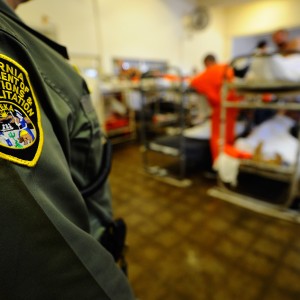“We really don't want to do more out-of-state either, so we're hopeful we get our extension,” Beard said in an interview. “But if we don't get that, then our only alternative will be to increase the out-of-state (transfers).”
A panel of three U.S. District Court judges has set a Friday deadline for an end to negotiations between Brown's administration and attorneys representing inmates.
The judges already postponed by nearly four months their original Dec. 31 deadline for the state to reduce its inmate population to about 110,000 inmates. Beard said that gave the state crucial time to begin operating what used to be a private prison in the Mojave Desert, open a medical hospital in Stockton and send additional inmates to five community correctional facilities within California.
Without those moves, the state would be looking at sending up to 7,000 inmates out of state instead of 4,000, he said.
California already houses roughly 8,900 inmates in Corrections Corporation of America prisons in Arizona, Mississippi and Oklahoma. The Department of Finance estimates it costs the state $29,500 a year for each inmate housed out of state, although that amount is less than the average-per-inmate cost within California because mostly younger and healthier prisoners are selected for the transfers.
The judges last year ordered the state not to move more inmates out of state, but Beard said he expects the judges would lift that ban when negotiations end this week.
An additional delay would give the state time to open an expansion of the Stockton medical facility this spring to house about 1,100 mentally ill inmates. The state last week also detailed plans to build three medium-security housing units over the next 2½ years at the Richard J. Donovan Correctional Facility in San Diego and Mule Creek State Prison in Ione, 40 miles southeast of Sacramento, to hold a combined 2,376 inmates. The combined cost of all the new housing is $700 million.
Beard would not say if the budget Brown will propose Friday calls for building additional prison cells.
California already has reduced its prison population by about 25,000 inmates during the last two years, mainly through the governor's criminal justice realignment plan that is sending lower-level offenders to county jails instead of state prisons.
Yet the inmate population keeps climbing, said Don Specter, director of the nonprofit Prison Law Office and one of the attorneys representing inmates in the long-running federal case.
“It's continuing to increase, so any building would be spending billions of dollars for only a temporary fix,” he said. “It also shows that realignment was only a temporary fix, as well.”
Brown and lawmakers of both political parties have been fighting previous court rulings that say the state can safely release more than 4,000 inmates by increasing good-behavior credits. The judges have previously said the state also could release elderly and medically incapacitated inmates without endangering the public.
“Other states and jurisdictions use lots of other methods other than increasing capacity, and there's no reason California can't do the same thing,” Specter said.
